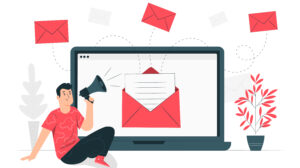Pinterest has 260+ million active monthly users. And while it may not be a social media giant like Facebook or Instagram, the visual bookmarking platform attracts a valuable demographic.
According to eMarketer, over 75 million people in the US are on Pinterest. And between 2017 and 2018, more new users signed up for Pinterest than Facebook and Twitter combined.
But what really makes Pinterest stand out is the way people use it: as a research tool. Pinterest users (pinners) tap into the visual search engine to evaluate options, find inspiration, and gather resources that will help them create better versions of themselves. Many will purchase products as a result.
In fact, 55% of the users on Pinterest look for products on the site, which is four times more than the other platforms.
If you’re a business owner and you don’t yet have a Pinterest strategy, then you’re losing your chances to scale your business further.
How can Pinterest help your business?
Unlike Facebook users, pinners are shoppers. They like seeing pins from brands in their feed. In fact, half of the millennials have discovered new brands and products on Pinterest.
Pinterest needs content creators to post fresh content regularly so they can keep attracting new users. Without pins from brands and marketers, the platform would have a hard time growing.
So you have users actively searching for products…
A visual search engine that puts products in front of them…
An algorithm that boosts the organic reach of pins…
It all adds up to a goldmine of opportunity for businesses who know how to use Pinterest effectively.
How to set up an account on Pinterest
First up, you need a business account to use Pinterest for business. A business account will give you access to analytics, rich pins, advertising and other tools you need to build your brand and measure the results of your marketing efforts.
You can also switch your personal account into a business account or create a new account for your business. Here’s how to create a business account from scratch:
Step 1. Create your business account
Head over to Pinterest and select “Create a business account.”
Enter your personal information…email address, password, business name, website…then select your business category. Business categories can be professional, media, retailer, local business, non-profit or institutions.
Make sure you read the service-related terms and privacy policies. Then create your account.
Step 2. Complete your profile
Now that you have your account set up, the next step is to create your profile so you can attract people to your account.
Go to settings in your profile. Here’s where you can upload your photo or company logo, enter the location of your business and complete the “About You” section.
Don’t forget to include keywords in your description so that Pinterest users can easily find your profile when they search for terms related to your business. Try to be as descriptive as possible within the character limit.
Your profile photo should be high-quality and reflect your brand. You want people to instantly recognize you while they’re exploring the platform.
Step 3. Confirm your website
This step helps Pinterest verify that the pins you share are indeed from your site. It also helps boost your Google rankings and track the pins people share from your website.
When you confirm your website, your logo will appear on any pins created from your website.
So how do you confirm your website?
Head back over to your profile. Select Settings and Confirm Website.
A dialog box will appear. Copy the code and place it into the <head> section of your website. If you’re on WordPress, you can use the Yoast SEO plugin if you want to bypass editing this manually.
Once you’re done, click Finish.
It’s a good idea to double check this step by sharing a pin from your website. If you see your logo on your pin, you’ll all set.
Different ways to use Pinterest for business
As mentioned above, you can use Pinterest for your business and earn significant profit. However, you must know the process to use it. The steps mentioned below will guide you in understanding how to make the best of Pinterest for your business:
Step 1. Plan your content strategy
Pinterest is a visual platform that favors high-quality content in the form of images, descriptions, and links. Getting results from Pinterest comes down to 3 things:
- Visual design
- Compelling headlines
- Targeted keywords
If you can check the box on these, you’ll drive traffic that will far exceed the page views you get from other social channels combined.
Step 2. Set up Personal Boards.
The way you “bookmark” on Pinterest is by pinning to boards. Boards are collections of pins that share a common theme or topic.
Ideally, you’ll want to break down the topics you’ll pin about into broad themes, and then narrow themes that are niche-specific. For instance, if you blog about social media, your boards might be:
- Social Media Marketing (broad)
- Facebook Marketing (still broad but more niche)
- Instagram Marketing
- Pinterest Marketing
- Facebook Ads Tips (niche)
- Pinterest Graphics (niche)
- Instagram Captions (niche)
It’s possible to go too “niche” with boards, so be careful. Make sure that you can find and/or create at least 30 pins to each board. If you can’t, it may be too narrow.
Step 3. Optimize and monetize.
Getting traffic to your website is huge. Sadly though, you can’t build your business on traffic alone.
Make sure you have an end goal before you start pinning.
Optimize your website with opt-in forms and sales funnels. This way new website visitors can become subscribers and customers. Add at least one pop-up and one landing to your website so that people can enter their email in exchange for a free resource.
Step 4. Pin regularly and frequently.
Pinterest is one of those platforms that loves content. The more you share, the more people you’ll reach.
And it’s not just about pure numbers here. Pinterest will reward you by increasing the reach of all of your pins and your account overall.
Create at least four pins for every post or page you want to promote. It’s best practice to pin to the most relevant personal boards first, then to other related group boards and tribes.
Step 5. Design great visuals.
Pinterest is a visual platform. It can also be a noisy platform. There’s also a lot of competition and standing out requires that you adhere to some basic ground rules when it comes to visual design.
First off, your photos should reflect the topic of your post and your overall brand. Pinterest SEO is sophisticated and can “see” your images. Many times it will rank your pin based on the image alone.
For example:
Don’t use a picture of a dog if your post is about business, even if you find the cutest little puppy who works perfectly with your headline. There’s a good chance Pinterest will show your pin for pets and dogs – not business.
You also want to check your pins on mobile and desktop to ensure that the text is large, bold and easy to read.
Step 6. Remember to use keywords.
If Pinterest were a scale, you’d have Visuals on one side and Words on the other. You need to balance them both to succeed on Pinterest.
Add keywords to your profile, board titles, board descriptions, page title, and pin descriptions.
Don’t forget about hashtags in pin descriptions (1-2 is all you need). Hashtags aren’t indexed in search results the way keywords are, but they will enable your pins to get found by more people.
Step 7. Add a Pinterest save button.
You’d be surprised at how much traffic you can generate by adding a Pinterest button to your images.
Save buttons help users to repin your content when the Pinterest browser button is not installed.
You can use static buttons that appear all the time or hover buttons that appear when someone mouses over the image (hover buttons on mobile display as static buttons).
To create Pinterest save buttons, use the Pinterest Widget Builder or a third-party plugin such as Tasty Pins or Social Warfare.
Step 8. Track and analyze.
Pinterest rewards pins with high engagement by showing them in search results and the feed. So it’s crucial to track your pins and share the best-performing ones frequently.
I recommend creating a spreadsheet and getting into a routine of sharing your best pins to all related boards and tribes once a month.
Keep in mind, pins with little engagement can have the opposite effect. They can actually hurt your Pinterest SEO.
So should you delete pins that don’t perform well?
The verdict is out on this one. Some say you should never delete your own pins. Others say you should remove lagging pins.
I recommend leaving them alone. You just never know when a pin might “take off” and start engagement.
Create better pins instead, ones that mirror the high-performers in topic, tone, and style. Remember, Pinterest is looking at the engagement of your pins overall. If most of them see a decent number of repins and clicks, you should be in good shape.
Wrapping it up
Pinterest wants fresh content from business owners who are actively engaging on the platform.
And yes, other brands in your niche are going to try to trump your pins and steal your traffic.
Don’t let them. Hang in there, be patient and stay consistent. Follow the strategies listed above, and you’ll be rewarded with more traffic, subscribers, and sales.




